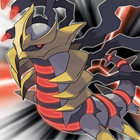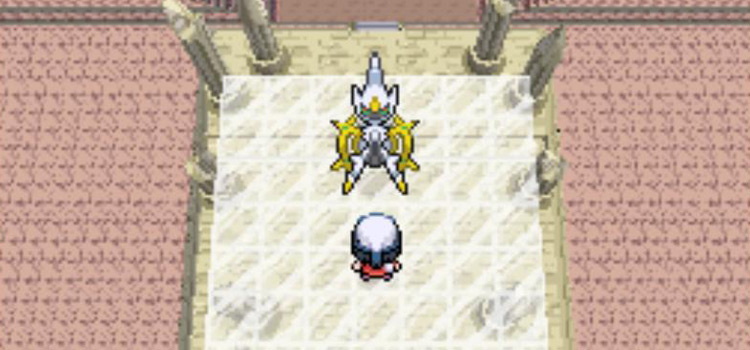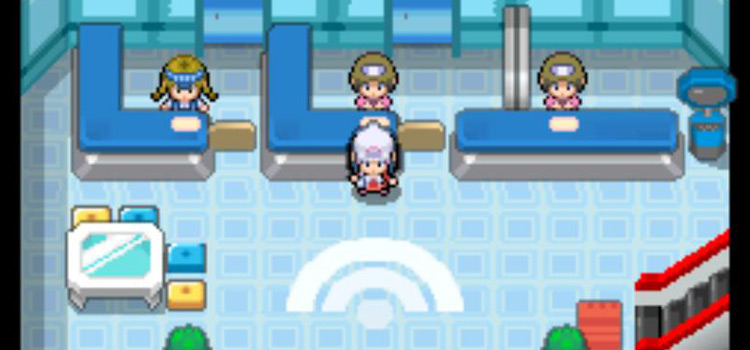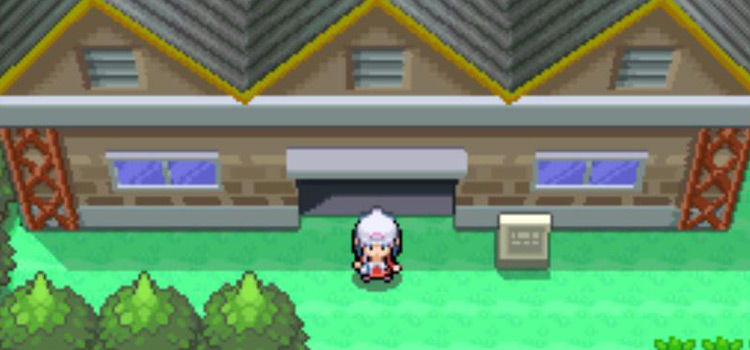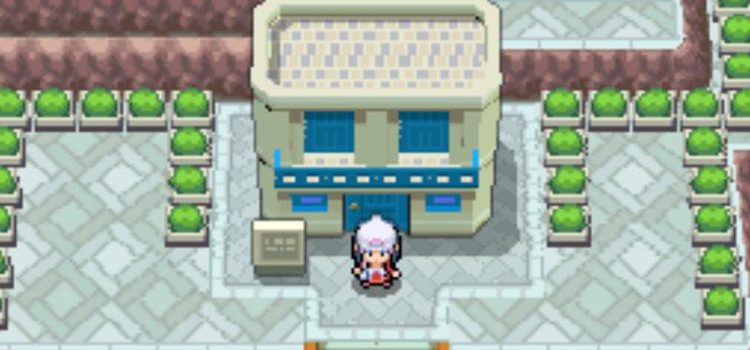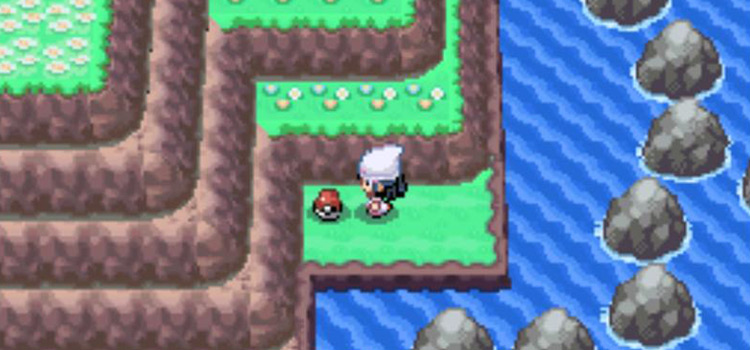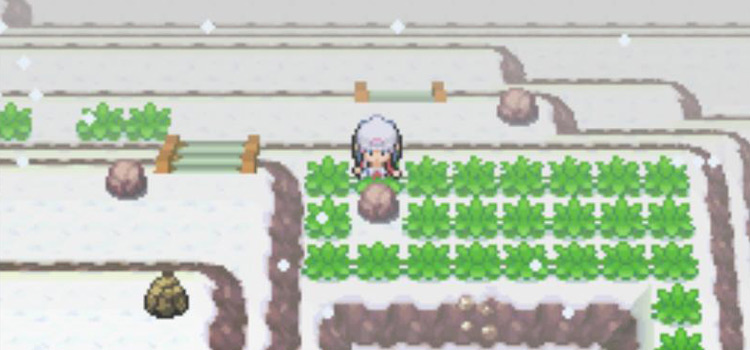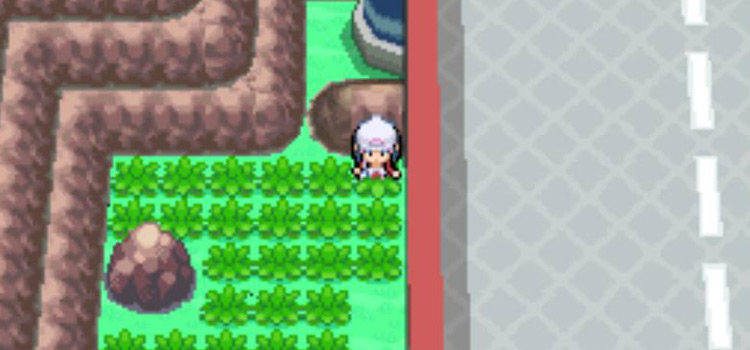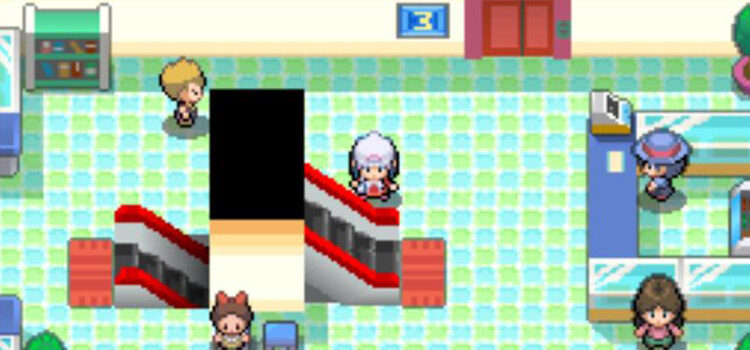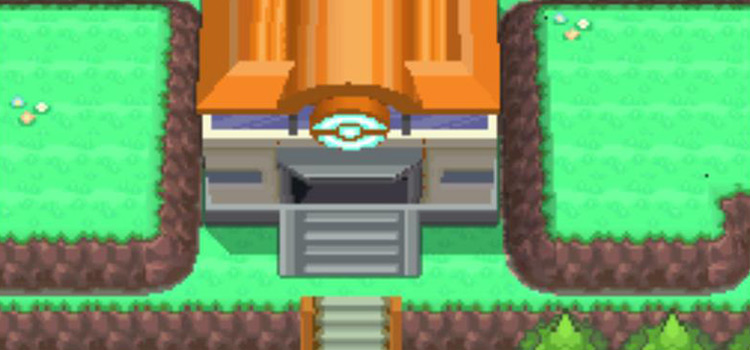
The Sinnoh Pokédex has spots for 210 Pokémon entries. But once you get the National Pokédex upgrade you’ll have room for information on 493 Pokémon, many of which can’t be seen or obtained naturally within the Sinnoh region.
So how do you fill the National Pokédex if you can’t encounter every Pokémon?
One answer is to migrate Pokémon from previous games into Pokémon Platinum, and that’s where Pal Park comes in.
What is Pal Park?
The function of Pal Park is to move Pokémon from the Game Boy Advance (GBA) games of Generation III to the Nintendo DS Generation IV games.
The GBA games compatible with Pal Park are:
- Pokémon Sapphire
- Pokémon Ruby
- Pokémon Emerald
- Pokémon FireRed
- Pokémon LeafGreen
For each individual GBA game you own, you will be able to transfer (or “migrate”) 6 Pokémon from that game’s PC Boxes to Pokémon Platinum once every 24 hours.
After these Pokémon are safely transferred, you can then take part in a Catching Show—a sort of performative minigame—by speaking to a clerk inside Pal Park’s lobby. The Catching Show completes the migration process and wins you Berries of increasing rarity depending on your performance.
Note: Migrating Pokémon via Pal Park requires either a Nintendo DS console with a GBA slot, or a Nintendo DS emulator with GBA slot functionality. You can find information about both methods further in this guide under the section “Migrating Pokémon From a GBA Game”.
How To Access Pal Park
You’ll be able to use Pal Park only after you’ve obtained the National Pokédex upgrade.
Although technically you can visit the area long before that point, you won’t be allowed inside the facility. And you won’t be able to Fly to Pal Park on subsequent trips until you’ve actually gone inside.
Reaching Pal Park for the First Time
This is a pretty long journey, spanning the entire lengths of Routes 220 and 221. The good news is that you can Fly to Pal Park at any time after your first visit.
You might want to stock up on Max Repels to keep from running into all the wild oceanic Pokémon that will attack you every few feet. You will also need a Pokémon that can use Surf.
Once you’ve received the National Pokédex upgrade, Fly to Sandgem Town and head south.
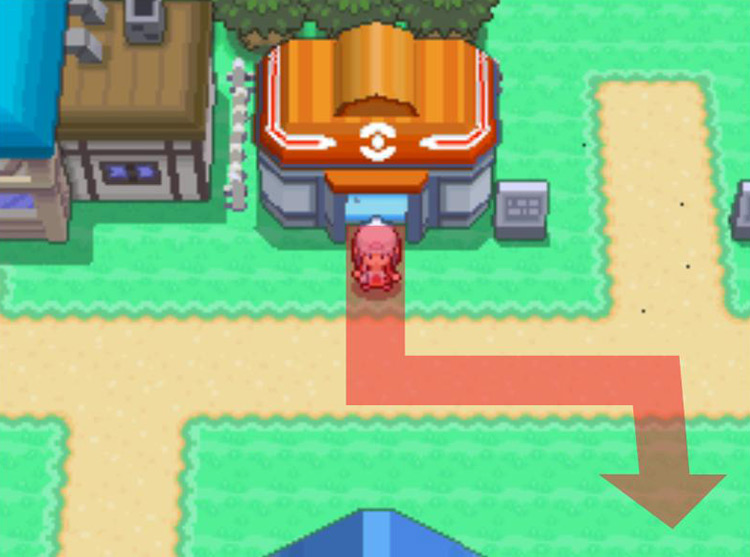
Continue moving south across the beach.
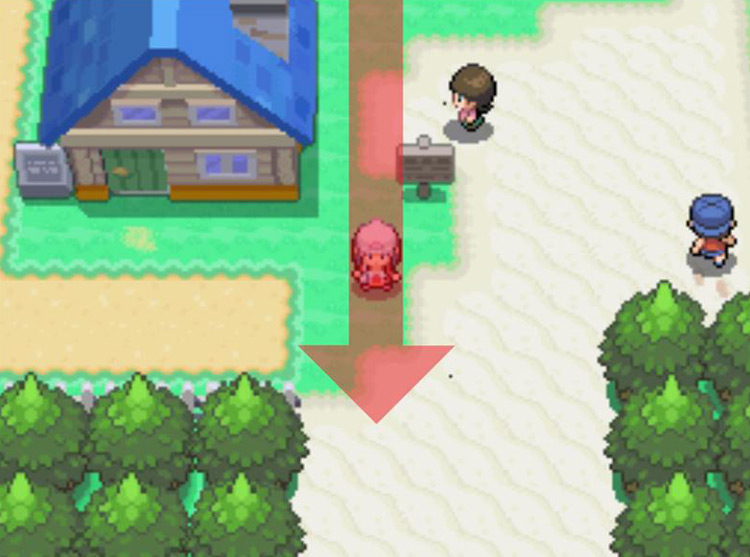
Keep going south and you’ll reach Route 219. Use Surf at the coastline to enter the sea.
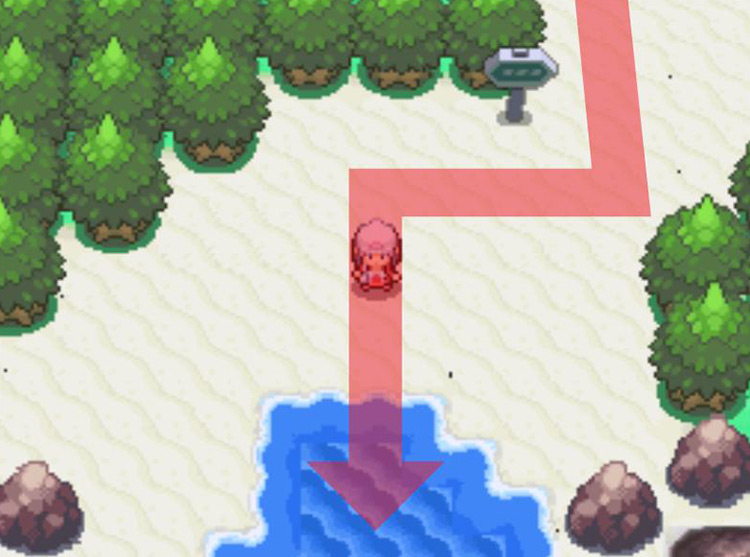
Surf southward until you reach Route 220. Step onto the sandy ground with the two Tuber kids playing on it and continue southward.
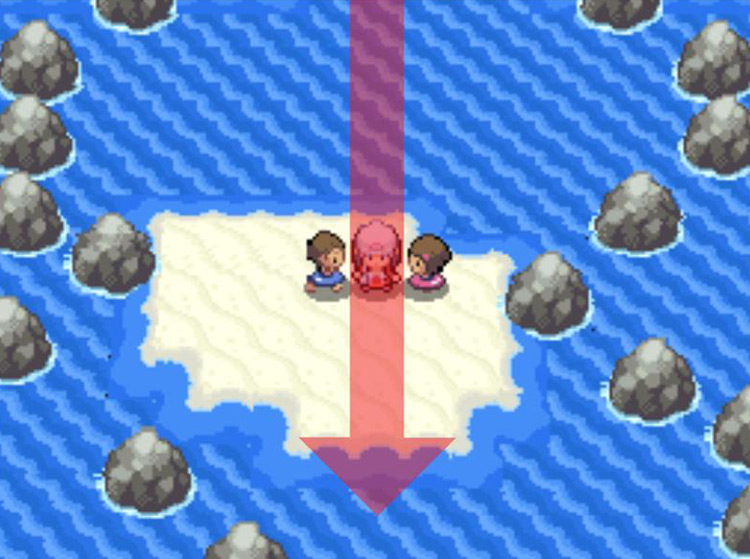
Boulders in the ocean will split the Route up into western and eastern paths. Enter the path that turns eastward.
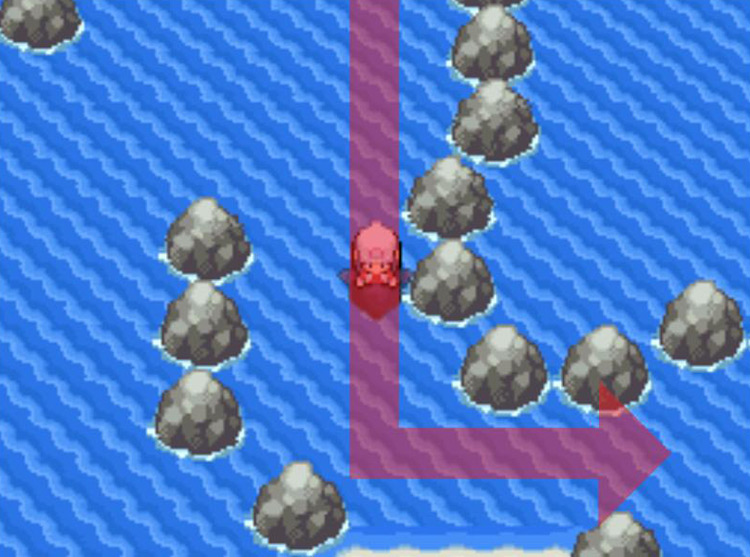
Head east across this linear path, passing the Swimmer trainer. You’ll enter Route 221 around this point.
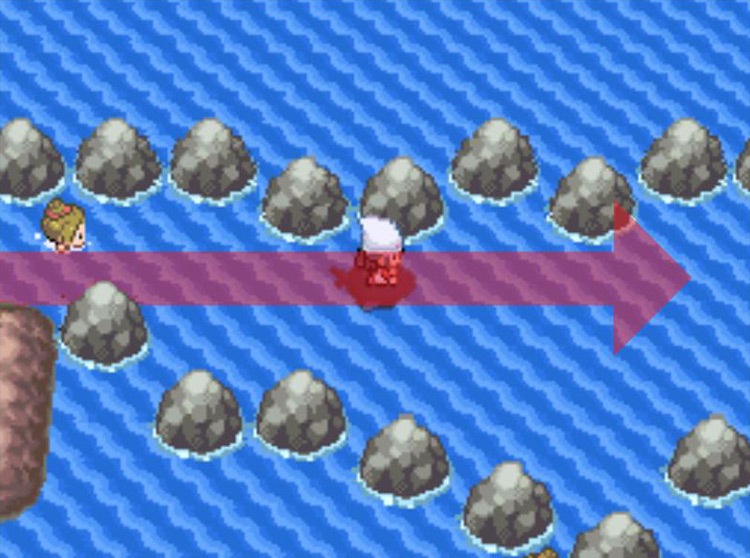
Follow the path as it leads to the southeast.
Then step onto the terrain just past the Swimmer.
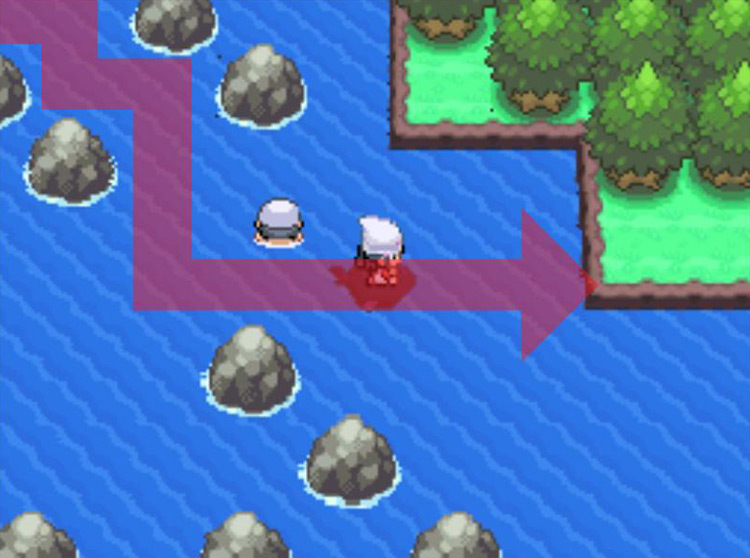
Now that you’re back on solid ground, continue heading east.
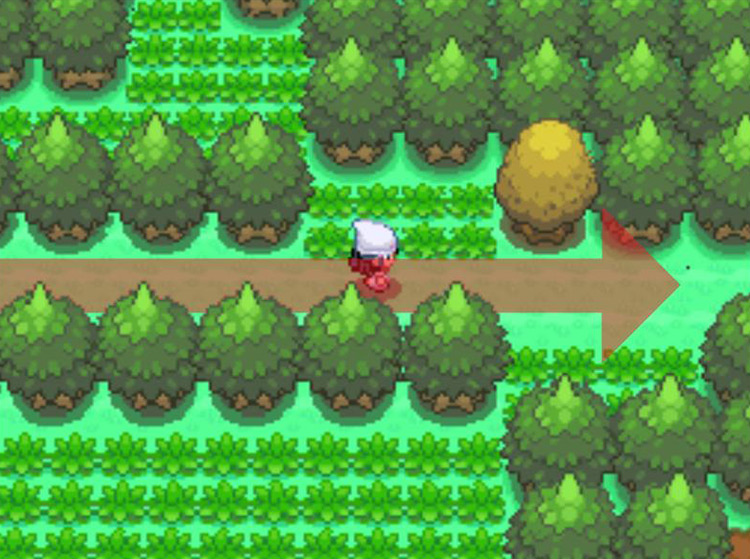
At the easternmost point of Route 221, Pal Park’s lobby will be up the stairs to your north.
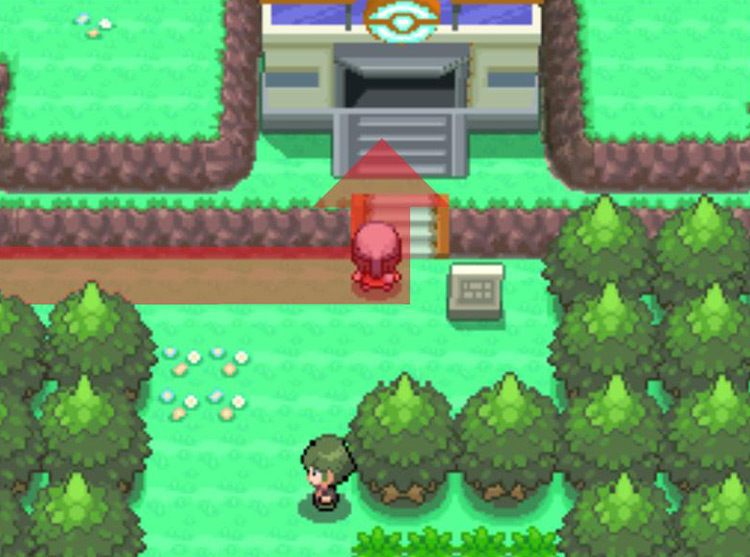
You will be greeted by Professor Oak during your first visit to Pal Park, and he will explain the basics of Pal Park.
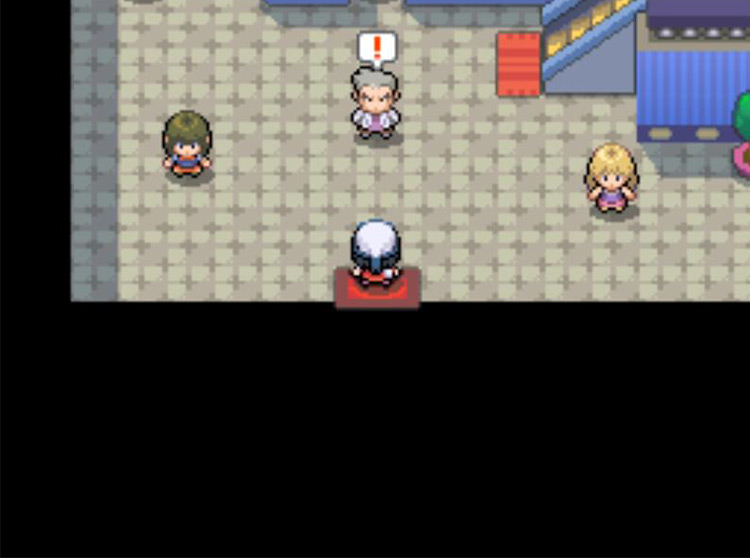
Migrating Pokémon From a GBA Game
Before you’re able to use Pal Park, you’ll need to select 6 Pokémon from a GBA game to carry over to Pokémon Platinum.
This can be done on either a physical DS console or a DS emulator, providing they meet the requirements outlined below.
Requirements for Migrating From a GBA Cartridge
To migrate Pokémon from a physical Game Boy Advance Pokémon game, you will need a Nintendo DS console that has a GBA slot. This slot can be found below the console’s bottom screen.
Only two DS models have this second slot. They are:
- The original Nintendo DS
- The Nintendo DS Lite
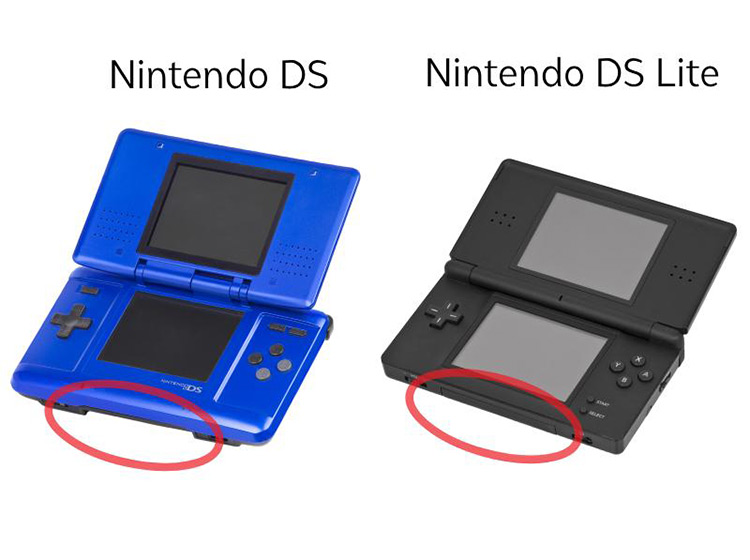
Make sure both the GBA and DS cartridges are fully inserted, then power on the console and move on to the Migration Process section below.
Requirements for Migrating Using an Emulator
If you’re playing the game on an emulator rather than physical DS hardware, you can still transfer Pokémon from a Generation III game to Pokémon Platinum. You’ll need:
- A Nintendo DS emulator with the GBA slot function (like MelonDS or DeSmuME)
- Your Pokémon Platinum rom (a .nds file)
- A rom of a Gen III Pokémon game (a .gba file)
All Nintendo DS emulators have different options and functions, but the most popular emulators all support GBA slot functionality. Generally this is set up by navigating the drop-down menus at the top of the window.
For instance:
- MelonDS: File > Insert ROM Cart…
- DeSmuME: Config > Slot 2 (GBA Slot) > GBA Cartridge
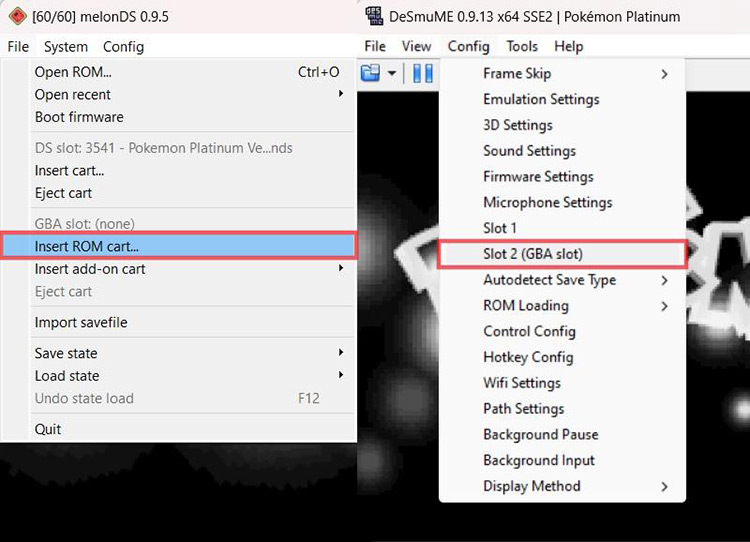
After selecting these options, you’ll navigate to the folder containing your Gen III rom and select it to insert the “cartridge” into the second slot.
Reset your emulator and you’ll be ready to follow the Pokémon selection steps in the Migration Process section below.
The Migration Process
With the save files of both games ready to go, it’s time to migrate your Pokémon.
This is done from the main menu that shows up after Pokémon Platinum’s title screen. You’ll want to select the option “Migrate From [Title].”
Note: Make sure all the Pokémon you wish to transfer from your GBA game are in PC Boxes; you will not be able to select Pokémon that are in your party.
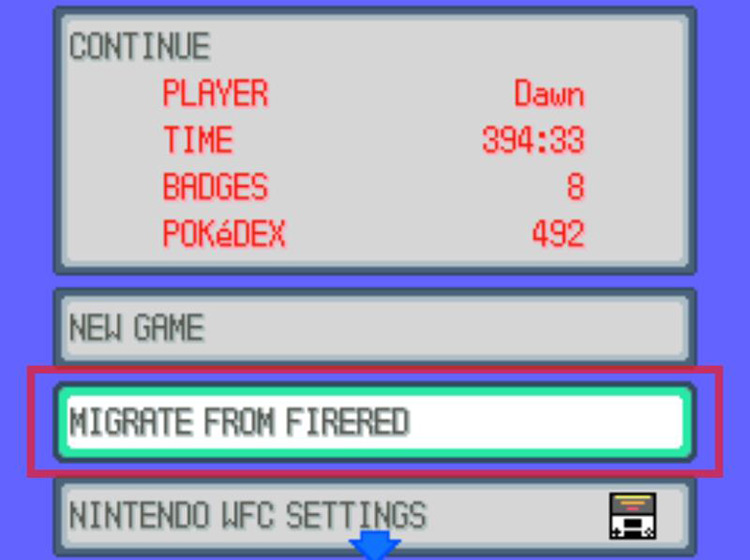
Selecting this option will bring up a confirmation message. Tap Yes to continue.
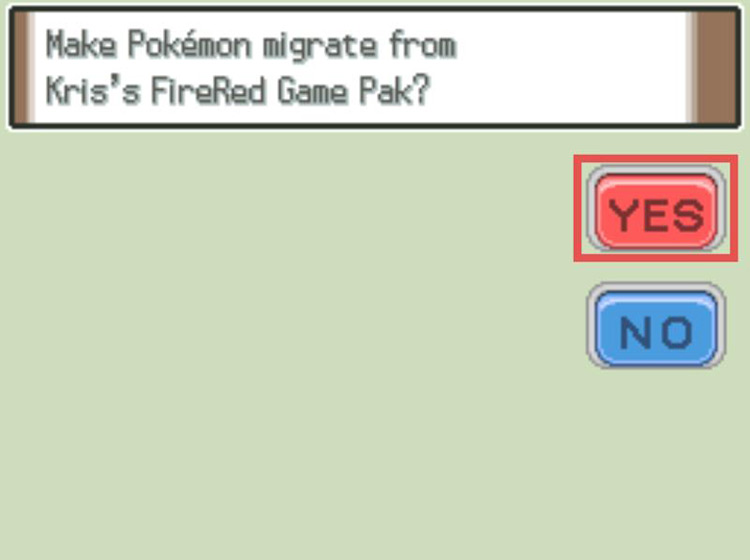
A warning will pop up letting you know your Pokémon can’t be transferred back to the GBA game after you complete the transfer.
When it asks if you still want to migrate, tap Yes.
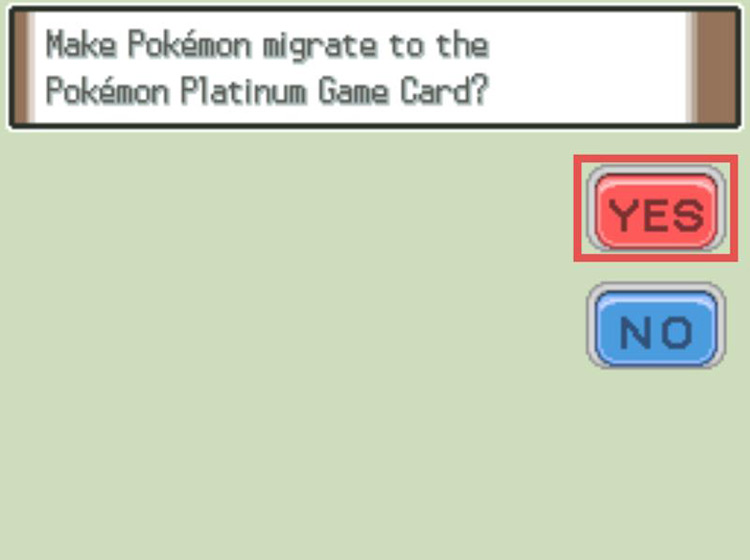
A list of all the PC Boxes from your Gen III game will be displayed. Search through the Boxes and choose the 6 Pokémon you want to transfer to Pal Park.
Keep in mind that you’re not allowed to send Pokémon that know Hidden Moves. This is to keep you from stranding yourself at any point in the GBA game.
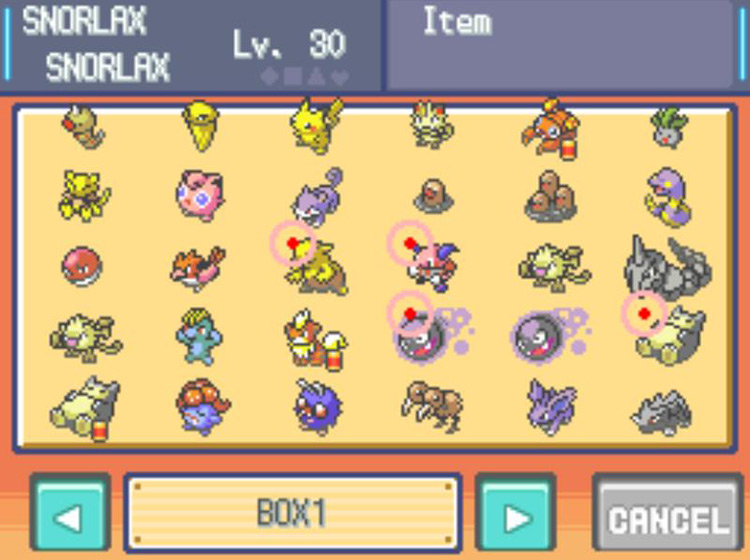
You’ll be taken to another screen that displays sprites of all 6 of the selected Pokémon at the bottom. Make sure they’re the correct Pokémon, then tap Yes to proceed.
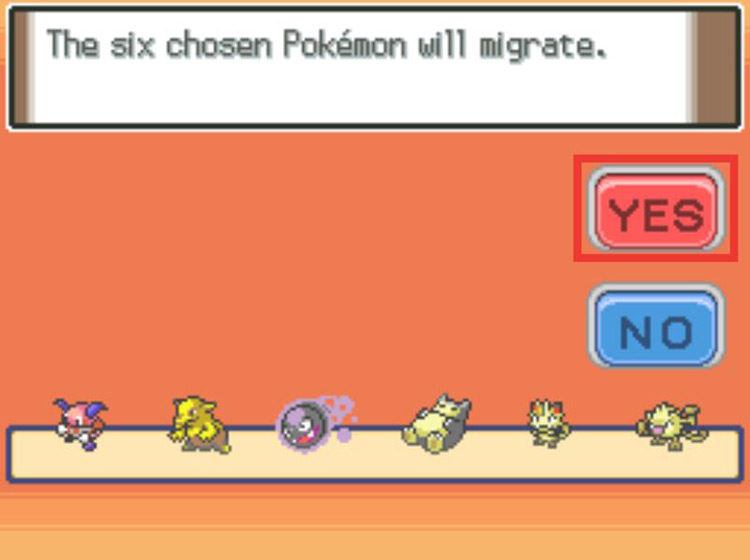
You’ll be reminded one more time that your chosen Pokémon can never be transferred back to their original game.
Tap Yes to (finally) complete this step.
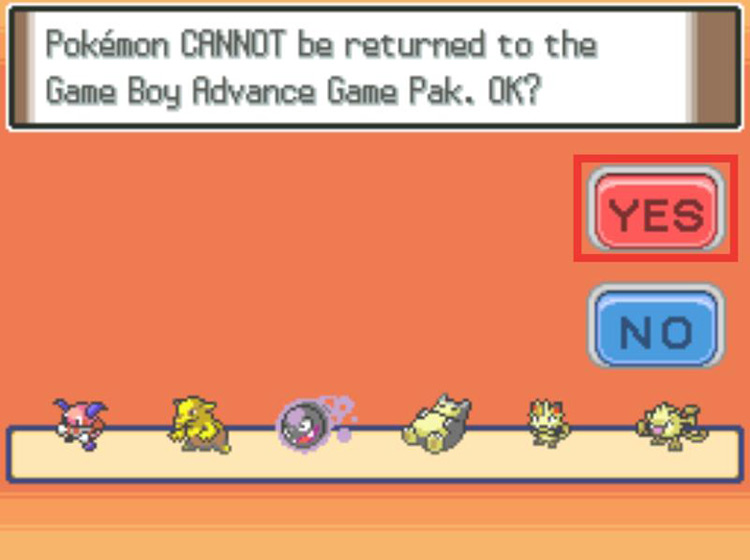
Both your GBA and Pokémon Platinum games will save, and you will get a confirmation message that the migration is successful.
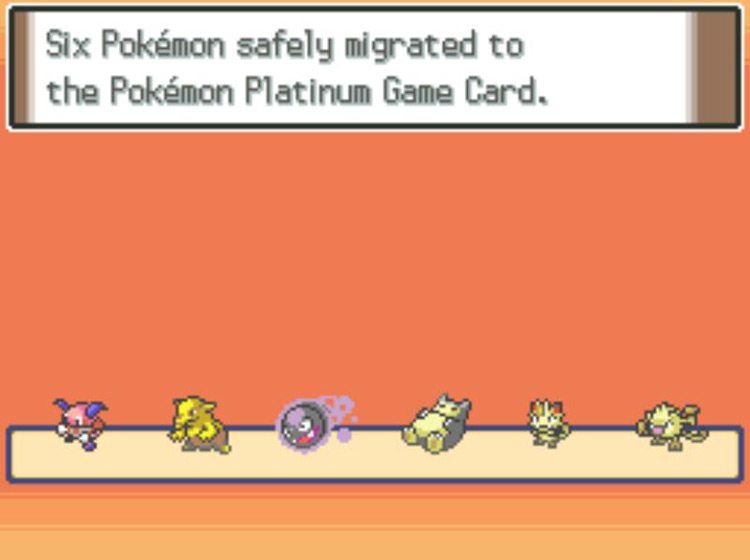
At this point the game will reset.
When it comes back on, you’re ready to head to Pal Park.
Retrieving Your Pokémon at a Catching Show
Your Gen III Pokémon won’t automatically be deposited into your Pokémon Platinum PC Boxes.
To actually receive your Pokémon, you’ll need to travel to Pal Park and catch them all during a special performance for a live audience.
To participate in a Catching Show and receive all your migrated Pokémon, speak to the man at the counter of Pal Park’s lobby. When he asks if you’d like to start a Show, select Enter.
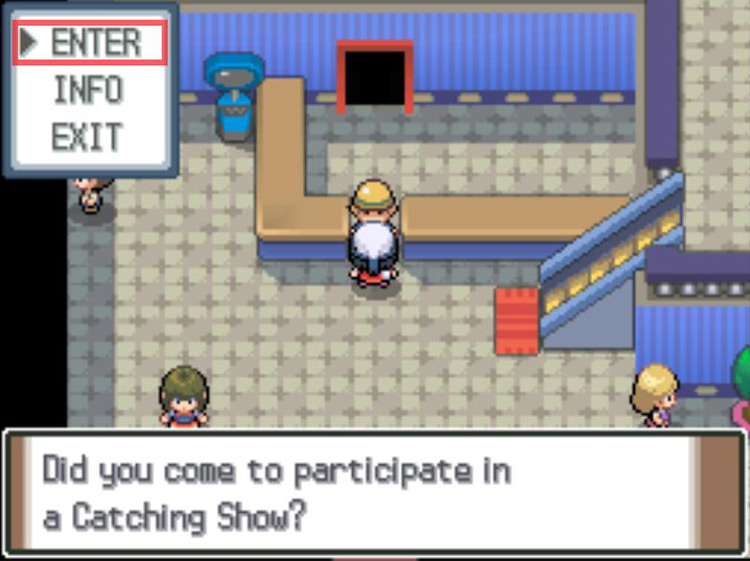
You will be handed 6 Park Balls, which are special Poké Balls you’ll use to capture your migrated Pokémon.
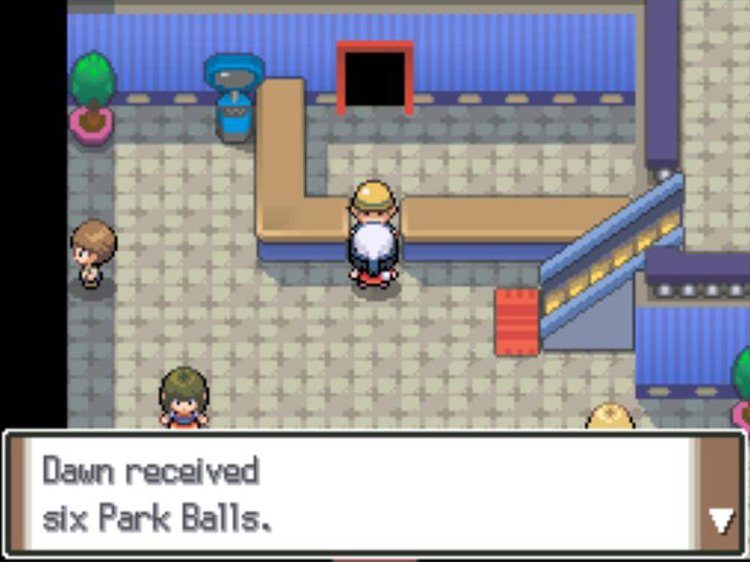
Then you will be ushered out into the Park, where all your Pokémon have been released to for you to find and catch.
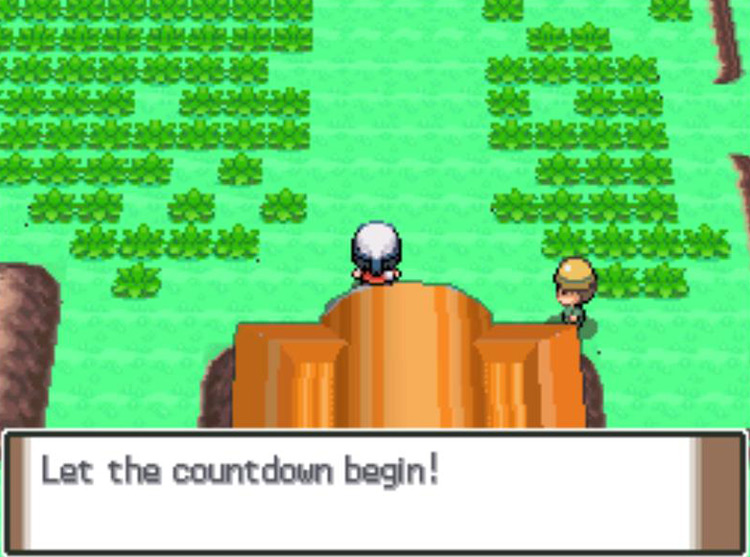
Catching Show Basics (How To Catch Pal Park Pokémon)
Re-catching your Pokémon is extremely easy. You’ll search for them like you would any wild Pokémon: by walking through tall grass or Surfing bodies of water until one of your Pokémon pops out at you.
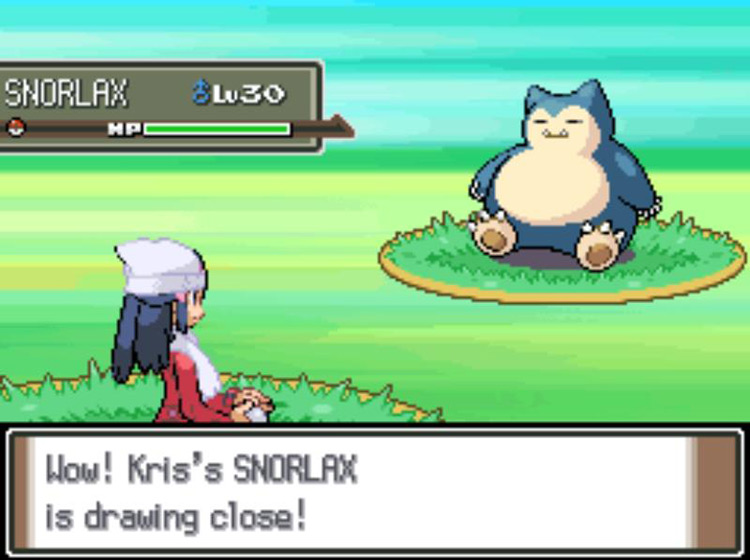
Park Balls have a 100% catch rate, so don’t worry if you’re migrating legendary Pokémon like Rayquaza or Mewtwo—you won’t have to suffer through throwing 50 Ultra Balls at them a second time.
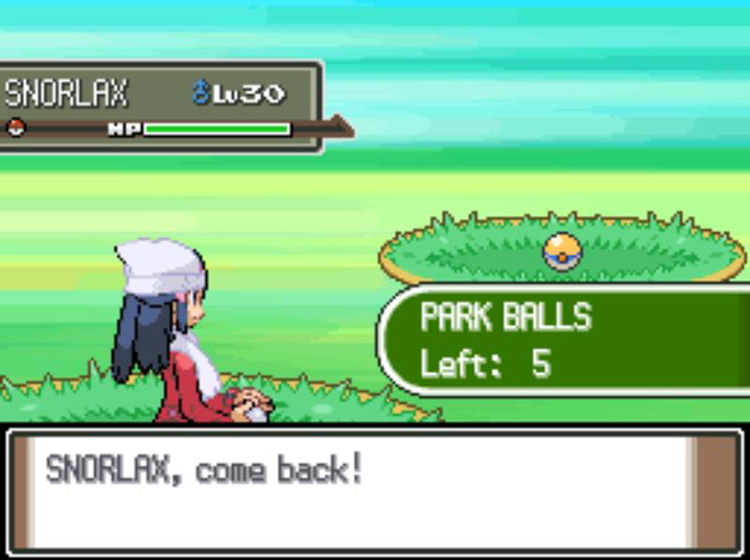
Just repeat this process until you’ve caught each of your Pokémon.
If you’d like to start the Catching Show over and attempt to earn a higher score (see the Scoring and Prizes section below for more info) then either head back through the entrance or select the “Retire” option from the menu.
Keep in mind that this will require you to release your caught Pokémon back into the park and catch them again.
Pal Park Areas
Pal Park is split up into 5 different areas, all with different terrains that represent the various biomes of the Pokémon world.
Each species of Pokémon can be found only in one of the five areas.
Starting at the Park’s entrance and moving clockwise, the areas are:
- Field
- Forest
- Pond
- Mountain
- Sea
Getting a high score in the Catching Show depends partially on knowing which areas to search for your Pokémon in order to cut down on your time.
The Field Area
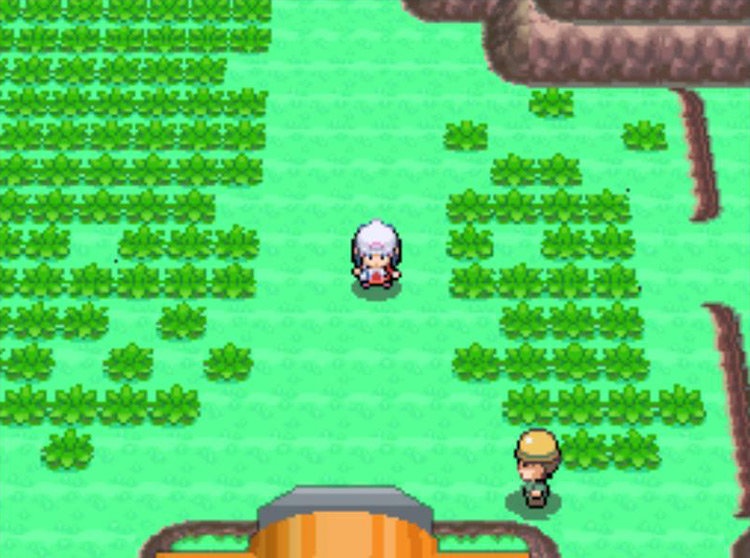
The Field area is the wide expanse of tall grass that you see when you first enter the Park.
123 different Pokémon can be found here, which is the highest number of any of the areas.
The Forest Area
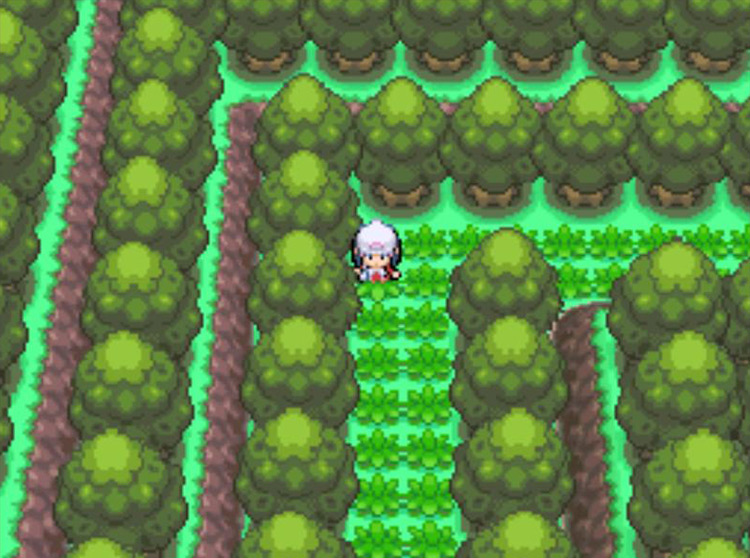
The Forest area lies northwest of the Field area, and is a narrow path of tall grass flanked on both sides by rows of trees.
74 Pokémon species can be found here, mostly Grass, Bug, and Poison types.
The Pond Area
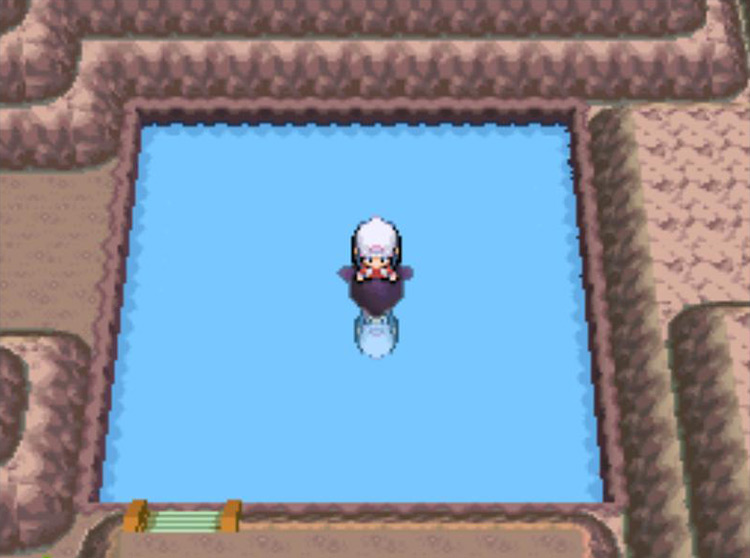
The northeastern section of Pal Park is the Pond. You will need a Pokémon that can use Surf in order to catch migrated Pokémon in this area.
There are 37 species of Pokémon that can be caught here, which is the fewest number that can be found of any Pal Park area.
The Mountain Area
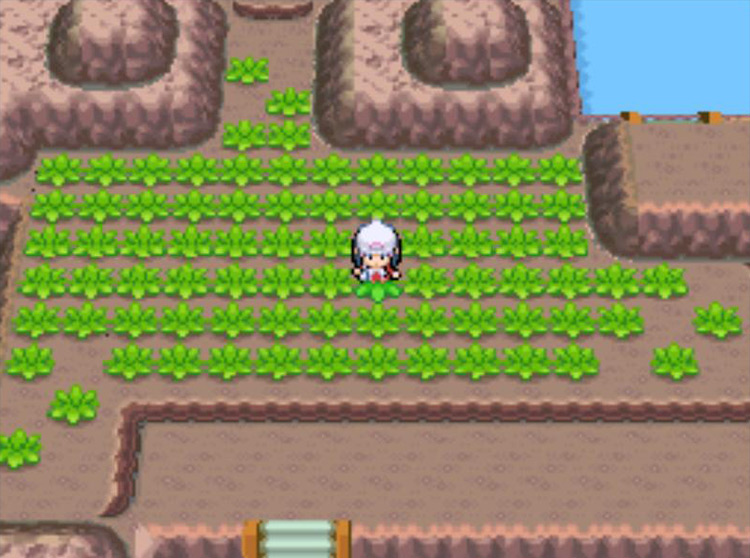
The Mountain area is a thinner strip of rocky terrain to the east that’s sandwiched between the Pond and Sea areas.
A total of 105 different Pokémon species can be found in this area.
The Sea Area
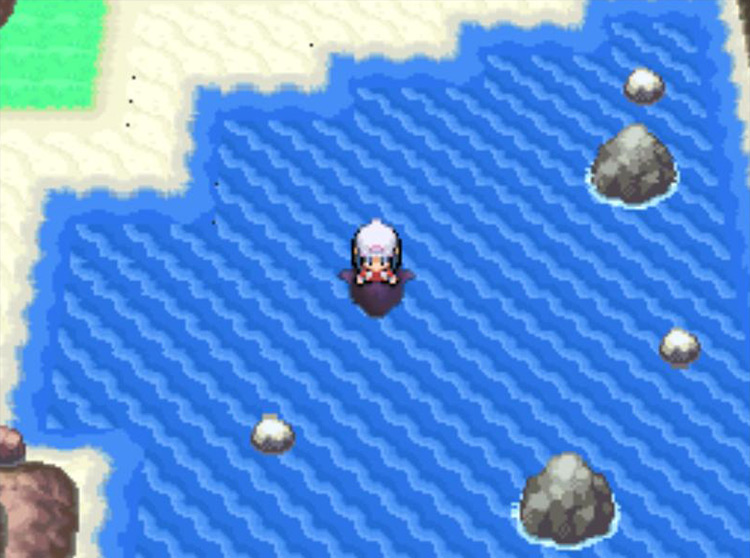
The Sea makes up Pal Park’s southeastern region. As with the Pond area, you will need a Pokémon with Surf to make any catches in the Sea.
47 different Pokémon species can be found here, almost all of them Water types that you would associate with deep-sea marine life.
Scoring and Prizes
Aside from retrieving your migrated Pokémon, there is also a scoring element to Catching Shows.
Your score has no effect on your ability to collect your Pokémon. But scoring highly can be a good way to obtain Berries that are hard to find elsewhere in the game.
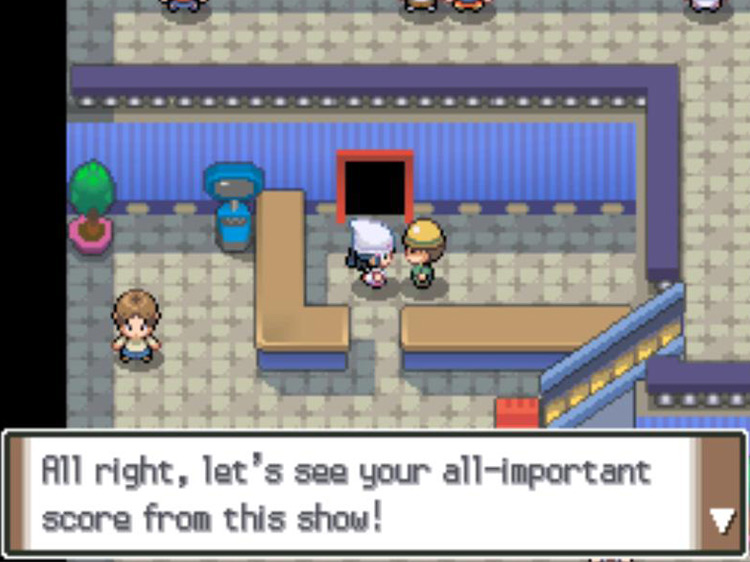
Scoring Categories
Your performance in a Catching Show is judged by the following three categories:
- Catching Points
- Time Points
- Type Points
Catching Points
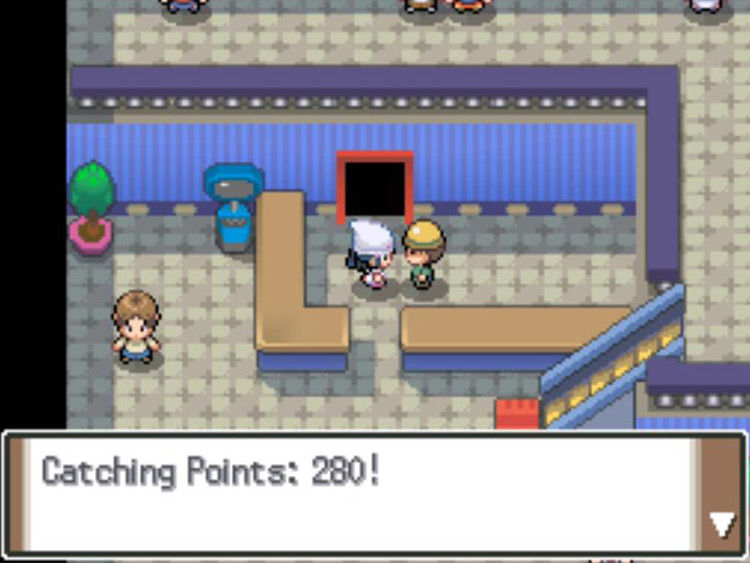
Your Catching Point score depends on the rarity of the Pokémon you’re migrating. Each Pokémon species has a base point value ranging from 30 to 100, with the 100-point Pokémon being mythical species like Mew and Celebi.
The maximum possible number of Catching Points you can earn in a single Catching Show is 600; this requires you to catch 6 mythical Pokémon, including 2 duplicates.
Time Points
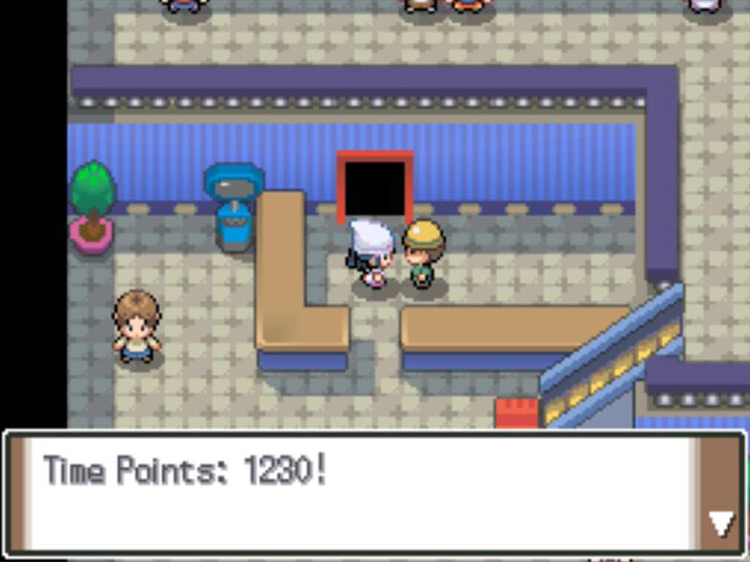
Your Time Point score reflects how long it takes you to catch all of the Pokémon you’re transferring. This score starts at 2000 points at the beginning of the Catching Show, with 2 points being subtracted for every second you spend in the Park catching Pokémon.
If your Catching Show takes 16 minutes and 40 seconds or longer, you will earn 0 Time Points.
Keep in mind that rarer Pokémon take longer to find than more common species, so there isn’t a hard maximum Time Point score. However, the higher end of the Time Point range is generally around 1600 points and up.
Type Points
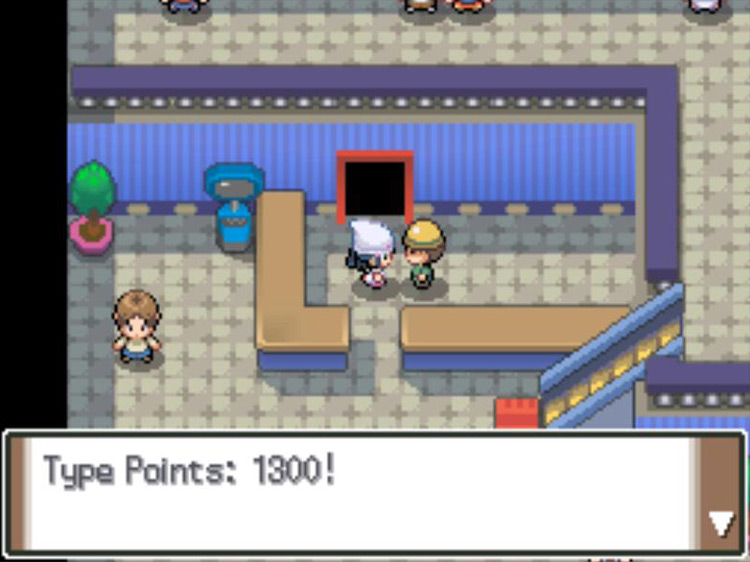
Your Type Point score is calculated based on the amount of variation there is between the 6 Pokémon you’ve caught in the Catching Show.
You’ll get a 200-point bonus for each Pokémon whose types don’t match those of the last Pokémon you caught before it. This means that the order in which you catch your Pokémon can factor into your overall score.
You’ll also receive 50 points for each Pokémon type represented among the 6 species you catch, which makes dual-type Pokémon potentially more valuable than monotypes.
To earn the maximum Type Point score of 1600, you’ll need to catch 6 dual-type Pokémon that have no overlapping types between them.
Prizes
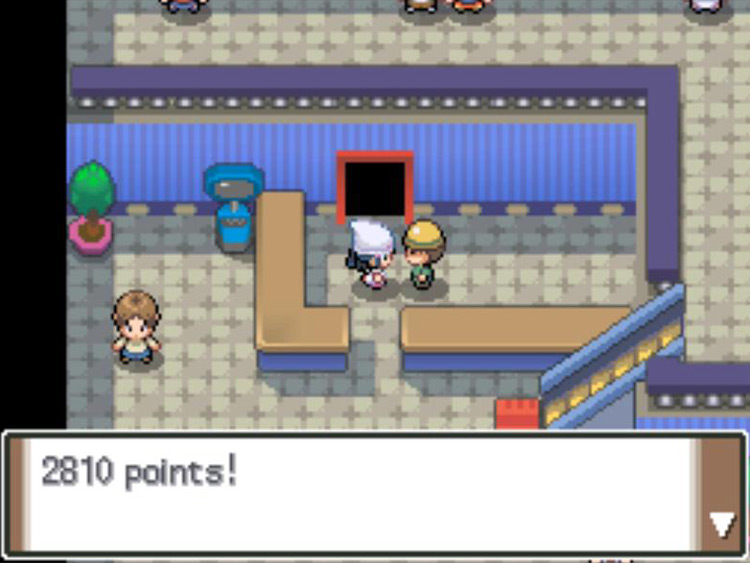
Depending on how well you perform in the Catching Show, you’ll win one of several types of Berries when you return to the lobby (check the prize table below).
Some of these Berries are hard to find in Pokémon Platinum, so it’s worth your time to aim for a high score in a Catching Show.
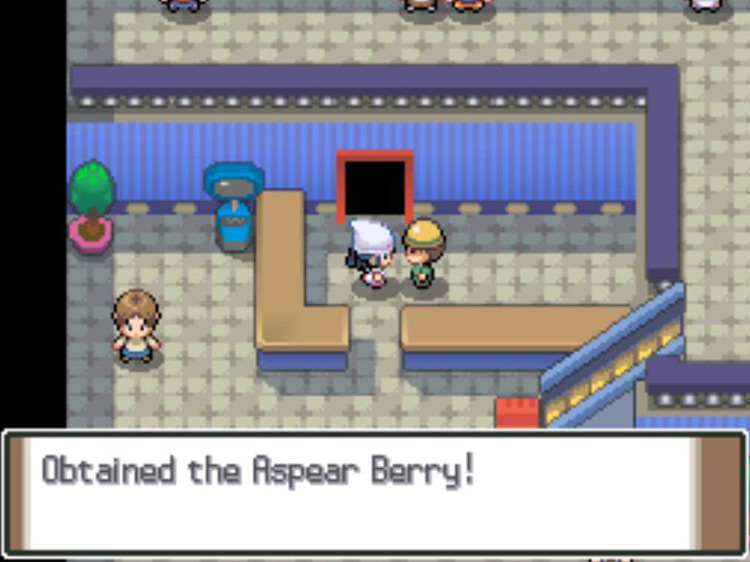
The table below lists all the possible berries you can win as prizes based on your total score for each show.
| Catching Show Rewards | |||
|---|---|---|---|
| 0 to 3,000 | 3,001 to 3,299 | 3,300 to 3,499 | 3,500 to 4,150 |
| Aspear Berry | Aguav Berry | Bluk Berry | Grepa Berry |
| Cheri Berry | Figy Berry | Nanab Berry | Hondew Berry |
| Chesto Berry | Iapapa Berry | Lum Berry | Kelpsy Berry |
| Leppa Berry | Mago Berry | Pinap Berry | Pomeg Berry |
| Oran Berry | Wiki Berry | Razz Berry | Qualot Berry |
| Pecha Berry | Sitrus Berry | Tamato Berry | |
| Persim Berry | Wepear Berry | ||
| Rawst Berry | |||
Changes to Migrated Pokémon
When you bring Pokémon to Pokémon Platinum from a Gen III game, most information stays the same. Each Pokémon’s Original Trainer name and ID number will transfer across Generations, for instance.
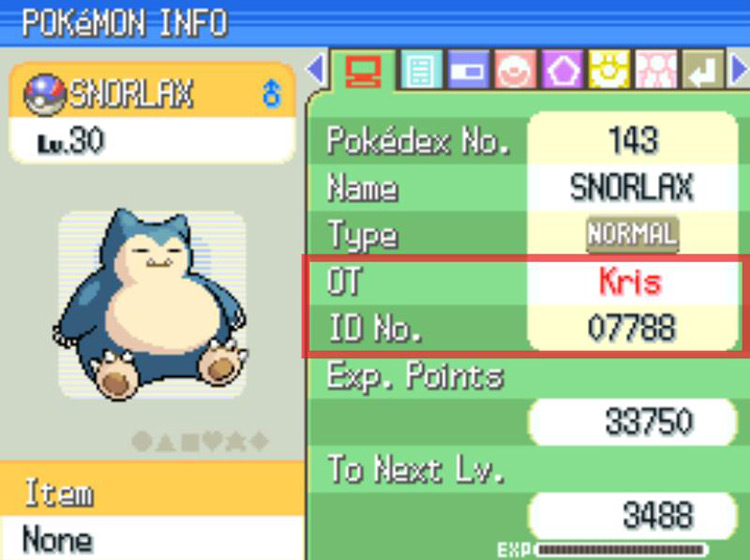
Even though you caught the Pokémon in Pal Park, the region of the game in which the Pokémon was originally caught will still be displayed, as will the type of Poké Ball used to make the original capture.
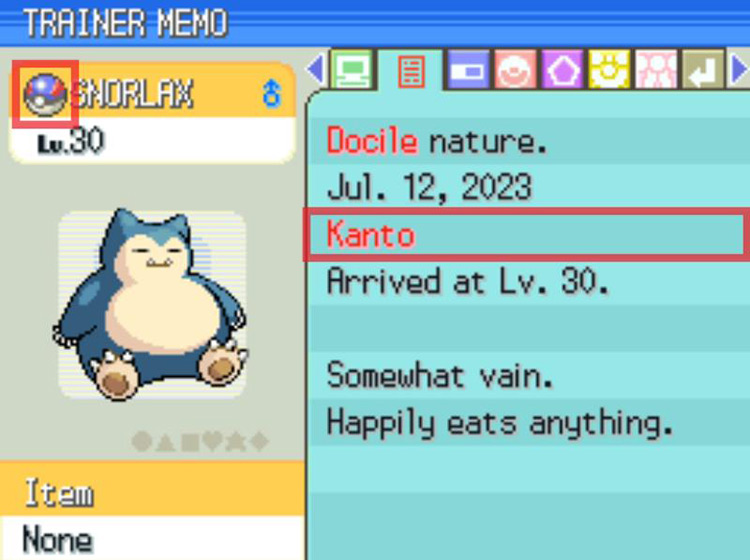
However, the capture date will change to the date you caught the Pokémon in Pal Park (owing to Gen III’s lack of an in-game calendar).
The “caught at” level will also change to the level the Pokémon was when it arrived at Pal Park.
All other data regarding moves, natures, and Abilities will remain the same.
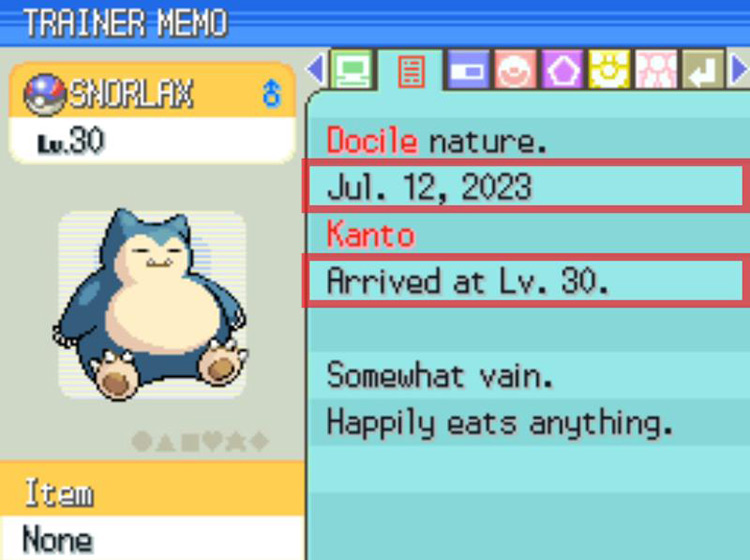
-
Pokémon Platinum
- Pokémon Platinum: Pal Park Guide (Location + How It Works)

